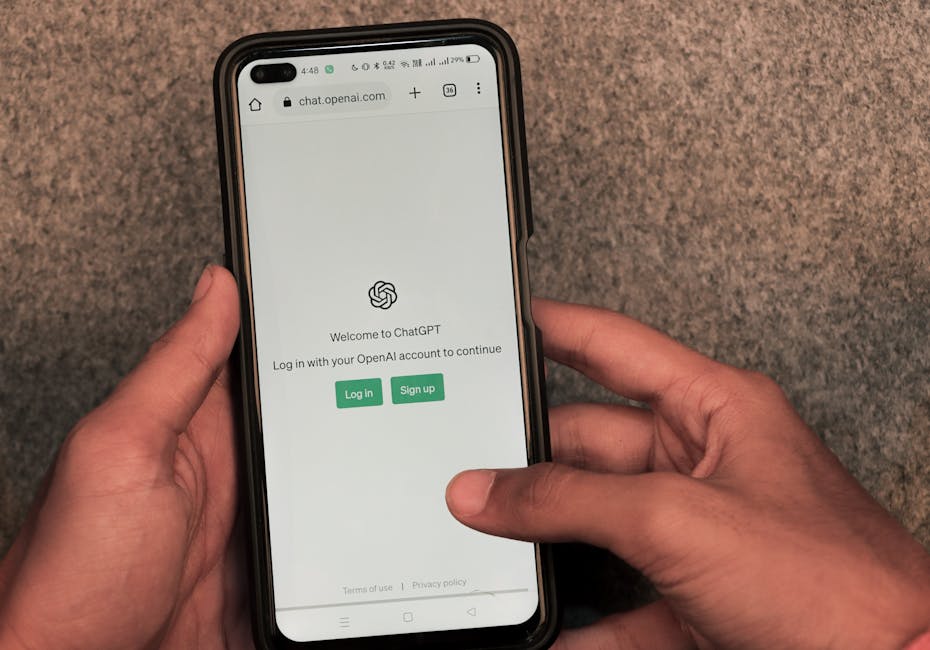 html
html
E-commerce scraping how-to for normal folks (guide)
What is E-commerce Web Scraping Anyway?
Imagine you want to track the price of a specific gadget on Amazon. You could manually check the website every day, which sounds incredibly tedious, right? E-commerce scraping automates this process. It's like having a little robot that automatically visits websites, grabs the information you need (like prices, product descriptions, or availability), and saves it for you in a structured format, like a spreadsheet or a database. This data is invaluable for *sales intelligence*.
Think of it as copying and pasting, but on a massive scale and with precision. Instead of *screen scraping* every page manually, a script does it for you. Whether you're interested in *price scraping*, *product monitoring*, tracking *inventory management*, or even gathering *lead generation data*, scraping can save you huge amounts of time and effort.
Why Would You Want to Scrape E-commerce Sites?
There are tons of compelling reasons to use *ecommerce scraping*:
- Price Tracking: Monitor competitor prices to stay competitive. See how quickly prices fluctuate and identify trends.
- Product Detail Extraction: Gather comprehensive product information (descriptions, specifications, images) for your own research or product development.
- Availability Monitoring: Track when products are in stock or out of stock – essential for managing your own inventory or spotting shortages.
- Catalog Cleansing & Enrichment: Clean up messy product catalogs by verifying and standardizing information across multiple sources. Enrich your own product data with additional details.
- Deal Alerting: Get notified immediately when products drop below a certain price – never miss a bargain!
- *Competitive Intelligence*: Understand your competitors' product offerings, pricing strategies, and promotional activities.
Beyond these common uses, you might also be interested in using a *twitter data scraper* to understand customer sentiment around certain brands or products. All this *data analysis* starts with acquiring the raw information efficiently.
Is Web Scraping Legal? (Important!)
This is a crucial question. *Is web scraping legal*? The short answer is: it depends. There's no blanket "yes" or "no." Here's what you need to keep in mind:
- Robots.txt: Always, *always* check the website's
robots.txtfile. This file tells you which parts of the site the website owner *doesn't* want bots to access. Respect these rules. You can usually find it atwww.example.com/robots.txt(replace "example.com" with the website you're interested in). - Terms of Service (ToS): Read the website's Terms of Service. They often explicitly prohibit scraping. Violating the ToS can lead to legal trouble.
- Rate Limiting: Don't bombard the website with requests. Implement delays in your scraper to avoid overloading the server. Too many requests in a short time can be interpreted as a denial-of-service attack.
- Data Usage: Be mindful of how you use the scraped data. Don't republish copyrighted content or use personal data in a way that violates privacy laws.
- Commercial Use: Scraping for commercial purposes might have different legal implications than scraping for personal research. Be sure to seek legal advice if you plan to use scraped data for your business.
In short, be respectful, ethical, and mindful of the website's rules. When in doubt, err on the side of caution.
A Simple E-commerce Scraping Tutorial (Step-by-Step)
Let's walk through a basic example using Python. We'll use the requests library to fetch the webpage and Beautiful Soup to parse the HTML. This example uses *python web scraping* techniques.
Prerequisites:
- Python installed (version 3.6 or higher recommended)
- A code editor (e.g., VS Code, PyCharm)
Step 1: Install the necessary libraries
Open your terminal or command prompt and run these commands:
pip install requests beautifulsoup4Step 2: Write the Python code
Create a new Python file (e.g., scraper.py) and paste in the following code:
import requests
from bs4 import BeautifulSoup
# Replace with the URL of the product page you want to scrape
url = "https://www.example.com/product/123" # <--- REPLACE THIS
try:
response = requests.get(url)
response.raise_for_status() # Raise an exception for bad status codes (4xx or 5xx)
soup = BeautifulSoup(response.content, 'html.parser')
# Example: Extract the product title (you'll need to inspect the website's HTML to find the correct tag and class)
title = soup.find('h1', class_='product-title').text.strip() # <--- ADJUST THIS
# Example: Extract the price (again, inspect the HTML)
price = soup.find('span', class_='product-price').text.strip() # <--- ADJUST THIS
print(f"Product Title: {title}")
print(f"Price: {price}")
except requests.exceptions.RequestException as e:
print(f"Error during request: {e}")
except AttributeError as e:
print(f"Error: Could not find the specified element. Check the HTML structure of the website. Error: {e}")
except Exception as e:
print(f"An unexpected error occurred: {e}")
Important:
- Replace
"https://www.example.com/product/123"with the actual URL of the product page you want to scrape. - Inspect the website's HTML source code using your browser's developer tools (usually by pressing F12). Find the HTML tags and classes that contain the product title and price.
- Adjust the
soup.find()calls to match the HTML structure of the website you're scraping. For example, if the title is in atag with the class "item-name", you'd usesoup.find('div', class_='item-name').text.strip()Step 3: Run the code
Save the file and run it from your terminal:
python scraper.pyIf everything works correctly, you should see the product title and price printed to your console.
Explanation:
- The
requests.get(url)function fetches the HTML content of the webpage. - The
BeautifulSoup(response.content, 'html.parser')function parses the HTML and creates a BeautifulSoup object, which makes it easy to navigate the HTML structure. - The
soup.find('h1', class_='product-title')function searches for the firsttag with the class "product-title". - The
.text.strip()method extracts the text content from the tag and removes any leading or trailing whitespace. - Error handling is crucial, wrapping the code in a
try...exceptblock allows you to gracefully handle network errors, missing elements, and other unexpected issues.
This is a very basic example. You can extend it to extract more information, handle pagination (scraping multiple pages), and save the data to a file or database.
Using NumPy for Data Analysis
Once you've scraped your data, you can use libraries like NumPy to analyze it. For example, you could calculate the average price of a product over time, or identify price fluctuations.
Here's a simple example of using NumPy to analyze scraped price data:
import numpy as np # Sample price data (replace with your actual scraped prices) prices = [10.99, 11.50, 10.75, 11.20, 10.90] # Convert the list of prices to a NumPy array prices_array = np.array(prices) # Calculate the average price average_price = np.mean(prices_array) # Calculate the standard deviation of the prices std_dev = np.std(prices_array) # Find the minimum and maximum prices min_price = np.min(prices_array) max_price = np.max(prices_array) print(f"Average Price: {average_price:.2f}") print(f"Standard Deviation: {std_dev:.2f}") print(f"Minimum Price: {min_price:.2f}") print(f"Maximum Price: {max_price:.2f}") # Example: Find the price changes price_changes = np.diff(prices_array) print(f"Price Changes: {price_changes}")This code snippet demonstrates how NumPy can be used to perform basic statistical analysis on scraped price data. You can adapt this code to analyze other types of data, such as product ratings, customer reviews, or inventory levels. By combining *web scraping software* with data analysis tools like NumPy, you can gain valuable insights into your competitors and the market.
Choosing the Right Web Scraping Tools
While
requestsandBeautiful Soupare great for simple scraping, more complex projects might require more robust *web scraping tools*. Here are a few options:- Scrapy: A powerful and flexible framework for building web scrapers. It's well-suited for large-scale scraping projects.
- Selenium: A browser automation tool that can handle websites with dynamic content (content that is generated by JavaScript). Can be used with a *playwright scraper* for more efficiency.
- Beautiful Soup (with Playwright or Selenium): Use BeautifulSoup for parsing but Playwright or Selenium to render Javascript heavy pages.
- Web Scraping APIs: These *api scraping* services provide pre-built APIs for scraping popular e-commerce websites. They handle the complexities of scraping and deliver the data in a structured format.
- *Web Scraping Service*: If you don't want to build and maintain your own scrapers, you can use a dedicated *web scraping service*. These services handle everything from data extraction to data delivery.
The best tool for you will depend on the complexity of your project and your technical skills.
A Quick Checklist to Get Started
Ready to dive in? Here's a checklist to guide you:
- Define your goal: What data do you need? Why do you need it?
- Choose your target website(s): Which websites contain the data you need?
- Inspect the website's HTML: Use your browser's developer tools to understand the HTML structure.
- Check the
robots.txtfile and Terms of Service: Ensure that scraping is allowed and that you understand the rules. - Choose your scraping tools: Select the appropriate libraries, frameworks, or services.
- Write your scraper: Implement the code to fetch and parse the data.
- Implement rate limiting: Avoid overloading the website's server.
- Test your scraper: Ensure that it's extracting the correct data and handling errors gracefully.
- Store your data: Save the data in a structured format (e.g., CSV, JSON, database).
- Analyze your data: Use tools like NumPy or Pandas to analyze the scraped data.
Final Thoughts
E-commerce scraping can be a powerful tool for gaining insights into the market, tracking competitors, and making data-driven decisions. However, it's important to approach it ethically and legally. By following the guidelines in this tutorial, you can start scraping e-commerce websites responsibly and effectively.
Whether you need help with *price scraping*, *product monitoring*, or just general *ecommerce scraping*, remember the principles outlined here.
Sign up to explore even more advanced data analysis and *sales intelligence* options. info@justmetrically.comHappy scraping!
#ecommerce #webscraping #python #dataanalysis #pricetracking #datascraping #scraper #competitiveintelligence #ecommerceanalytics #webscrapingtutorialRelated posts
Comments
- The


